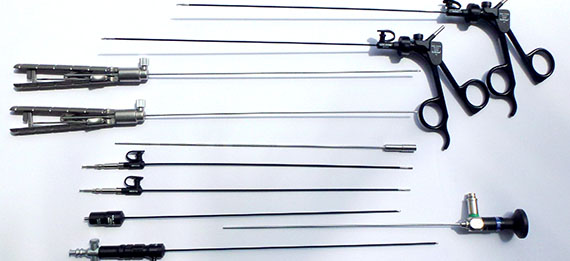SURGERY SERVICES
- Home
- Surgery
Dr William Ddamulira offers patients various surgical options:
Laparoscopic Surgery:

Also referred to as “Key Hole Surgery”, Laparoscopic surgery is a minimally evasive option for operations that require more precision.
The surgery is performed by making a small incision and navigating special laparoscopic instruments through the arteries to the surgery site to perform the surgery. The surgeon is able to perform the entire operation through the small incision by manoeuvring the tools, usually surgical rods attached to a camera and operating tools, through the body.
Laparoscopic Surgery is a relatively new method of operating, but the advantages are undeniable.
The smaller incisions allow for less post-operative pain and discomfort, as well as a shorter recovery time. The surgeon views the operation on a monitor, which receives feed from the camera inside the patient. This gives the surgeon a better view of the operating area and improves the accuracy with which the surgery is performed.
Endoscopic Surgery:

Endoscopic surgery is a minimally invasive approach in which urologic surgeons use a tiny video camera (the endoscope) and specialized surgical instruments attached to the endoscope to operate.
The endoscope is designed to pass through an existing space in the body such as the urethra, the mouth, the nostrils or the anus. In some procedures surgeons pass the endoscope through a very small incision in the skin (percutaneously) to the organ or area to be treated.
Dr William Ddamulira will insert endoscopic tools into a natural entrance to the body and will then navigate to the site and perform the operation using the camera and tools.
As there is no incision site, the post-operative recovery time is relatively short. The risk of infection is also reduced, as well as the amount of pain and discomfort patients feel after surgery.
Open Surgery:

Open surgery is the traditional method of surgery which involved making a long incision and performing the operation manually through the incision site.
Dr Ddamulira will make the incision at the operating site to gain access. He will then use traditional surgical tools to perform the procedure before closing up the incision.
Open surgeries are often the standard option, though the post-operative recovery period is longer than the minimally invasive options. The larger incision allows more space to work in, so surgeons are able to manoeuvre more freely.

